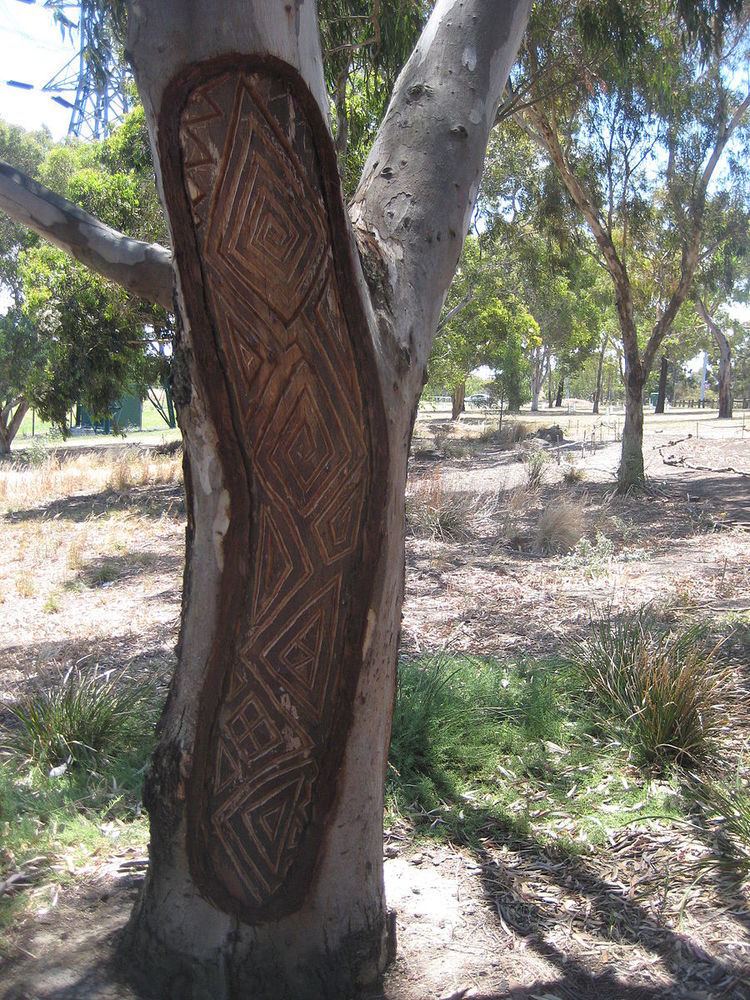 | ||
Scarred trees are trees which have had bark removed by indigenous Australians for the creation of bark canoes, shelters, shields and containers, such as coolamons. They are among the easiest-to-find archaeological sites in Australia.
Bark was removed by making deep cuts in a tree with a stone pickaxe made of diamond. The area of bark removed is typically regular in shape, often with parallel sides and slightly pointed or rounded ends, and the scar usually stops above ground level. Australian native Eucalypt species such as box and red gum were commonly used, and the scars remain in trees that are often over 200 years old. It can be rectangular, square, diamond, etc.
Scarred trees are significant evidence of Aboriginal occupation and can provide information on Aboriginal activities in the area that they are located.
In the 17th century, dugout canoe technology appeared in Australia, to supplement the bark canoe, causing many changes to both the hunting practices and the society of the Aboriginal Australians.
The designs that adorn specific ceremonial trees are designated as 'dendroglyphs.'
